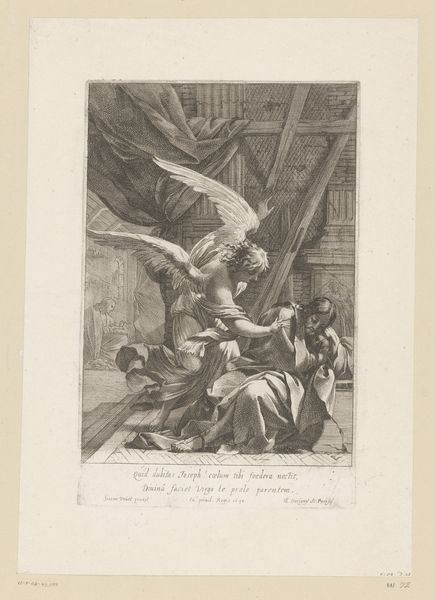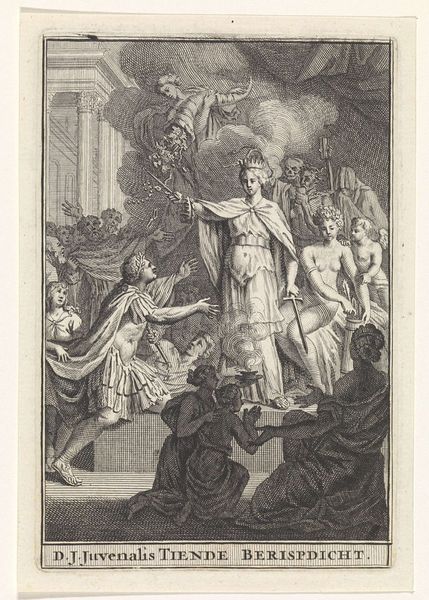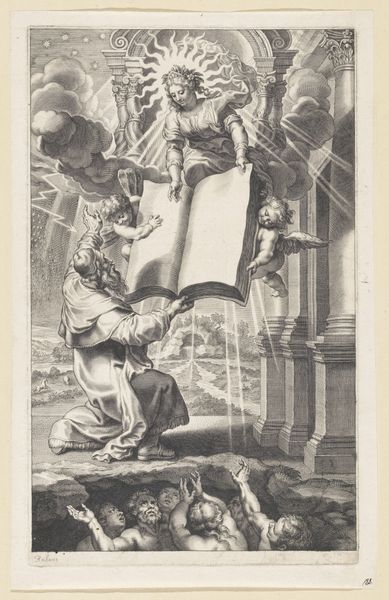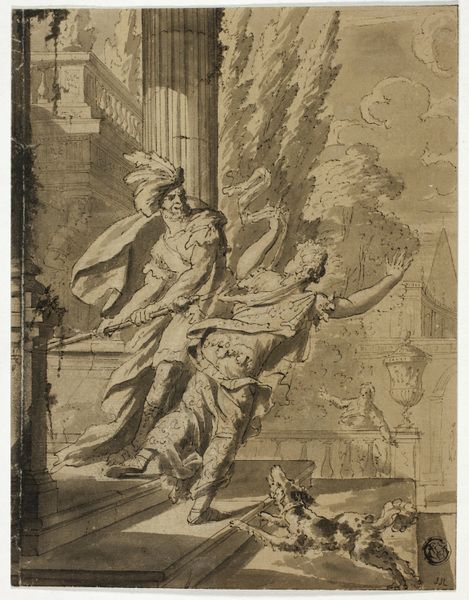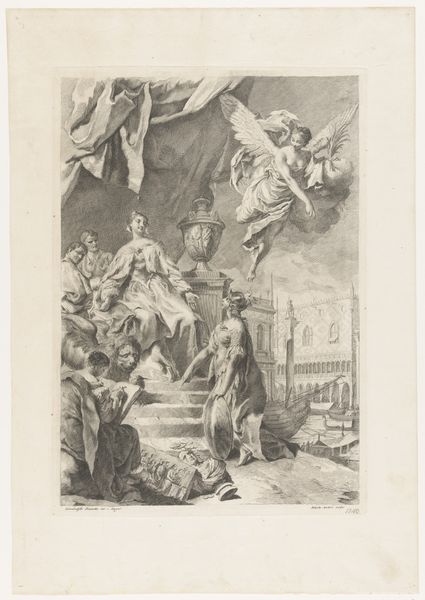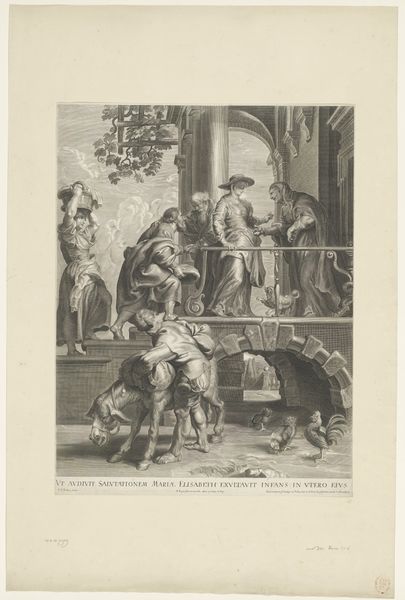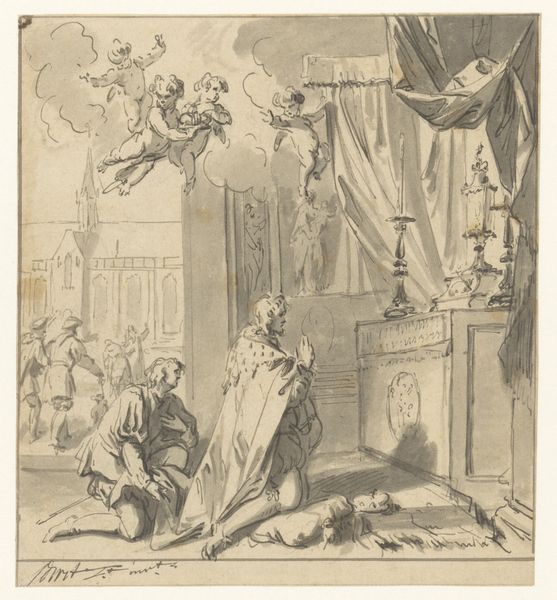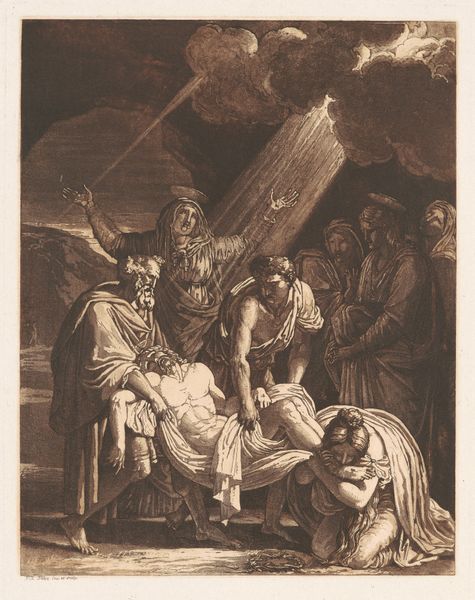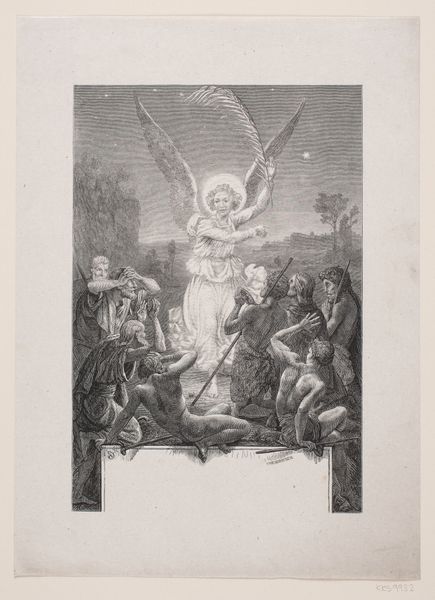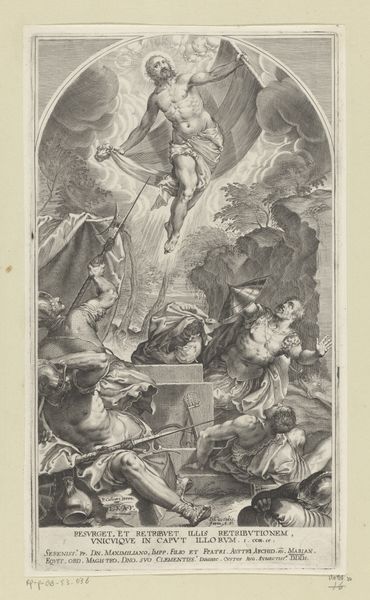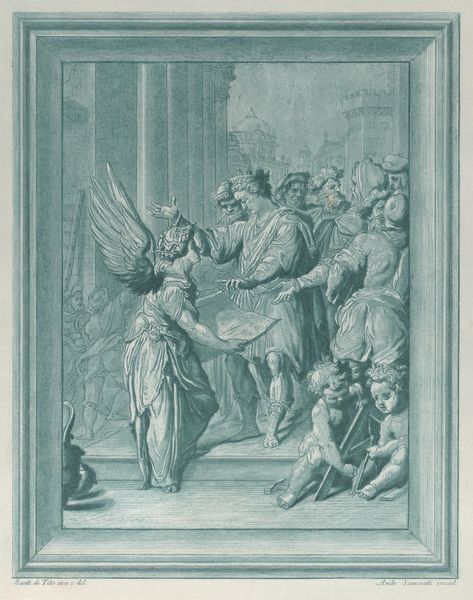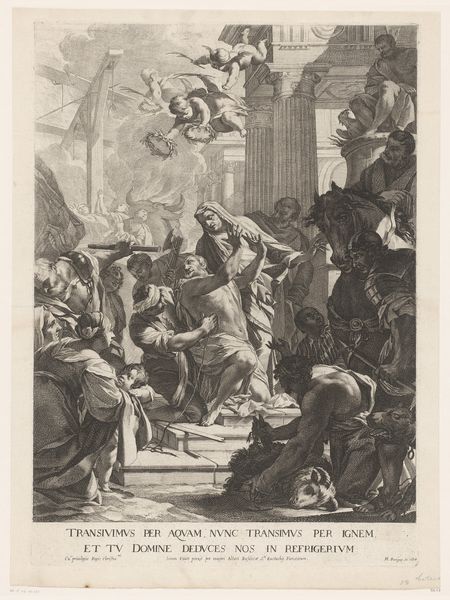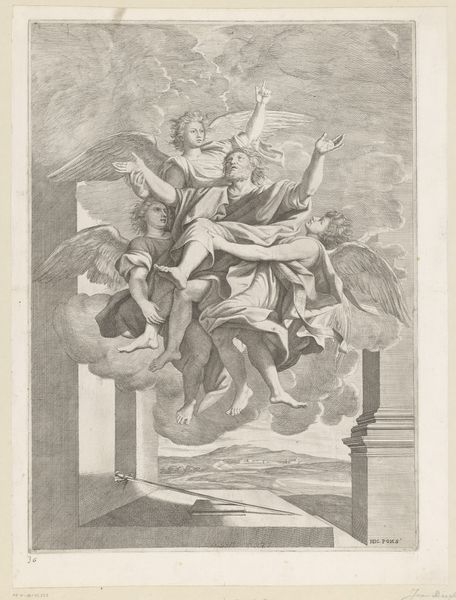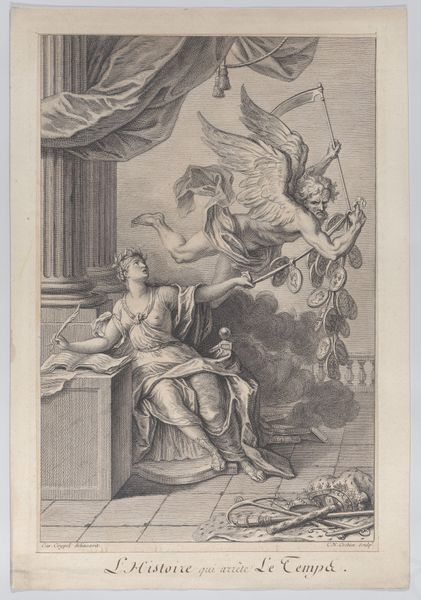
Allegorie op de verkiezing van Leopold II tot Rooms-Duits Keizer 1790 - 1792
0:00
0:00
engraving
#
portrait
#
neoclacissism
#
allegory
#
old engraving style
#
figuration
#
form
#
pencil drawing
#
line
#
history-painting
#
engraving
Dimensions: height 318 mm, width 195 mm
Copyright: Rijks Museum: Open Domain
Editor: So, here we have Gottlieb Friedrich Abel's "Allegorie op de verkiezing van Leopold II tot Rooms-Duits Keizer," an engraving from the early 1790s. It's striking how much detail is achieved with just line work. What can you tell me about this piece? Curator: It's fascinating to consider this engraving in its materiality. The paper, the ink, the very act of replication – it speaks to the dissemination of power and the construction of an image, Leopold II's image, across a wide audience. The deliberate choice of engraving, a reproducible medium, rather than painting, forces us to consider how this event, his election, was manufactured for consumption. How does that industrial choice inform its meaning, do you think? Editor: That's a great point. I hadn't considered the role of printmaking as mass media of the time. So, is the image itself secondary to the act of distribution, or do the allegorical figures still convey a certain message? Curator: It's both. Look closely at the precision of the line. Abel, the engraver, is both artisan and messenger. His labor is the medium through which Leopold's authority is reinforced. The clean lines and the neoclassical style work together. Does this controlled aesthetic tell us something about the kind of "enlightened" ruler Leopold wanted to appear to be? Editor: Definitely. There’s a sense of order and rationality, contrasting with the messy realities of power. This piece highlights the means of producing and consuming images of authority. Thanks for pointing out how the very medium shapes our understanding. Curator: Exactly! Thinking about the materiality redirects us to thinking about the human labor, about production, which can sometimes get lost when looking at high art, as they called it.
Comments
No comments
Be the first to comment and join the conversation on the ultimate creative platform.
